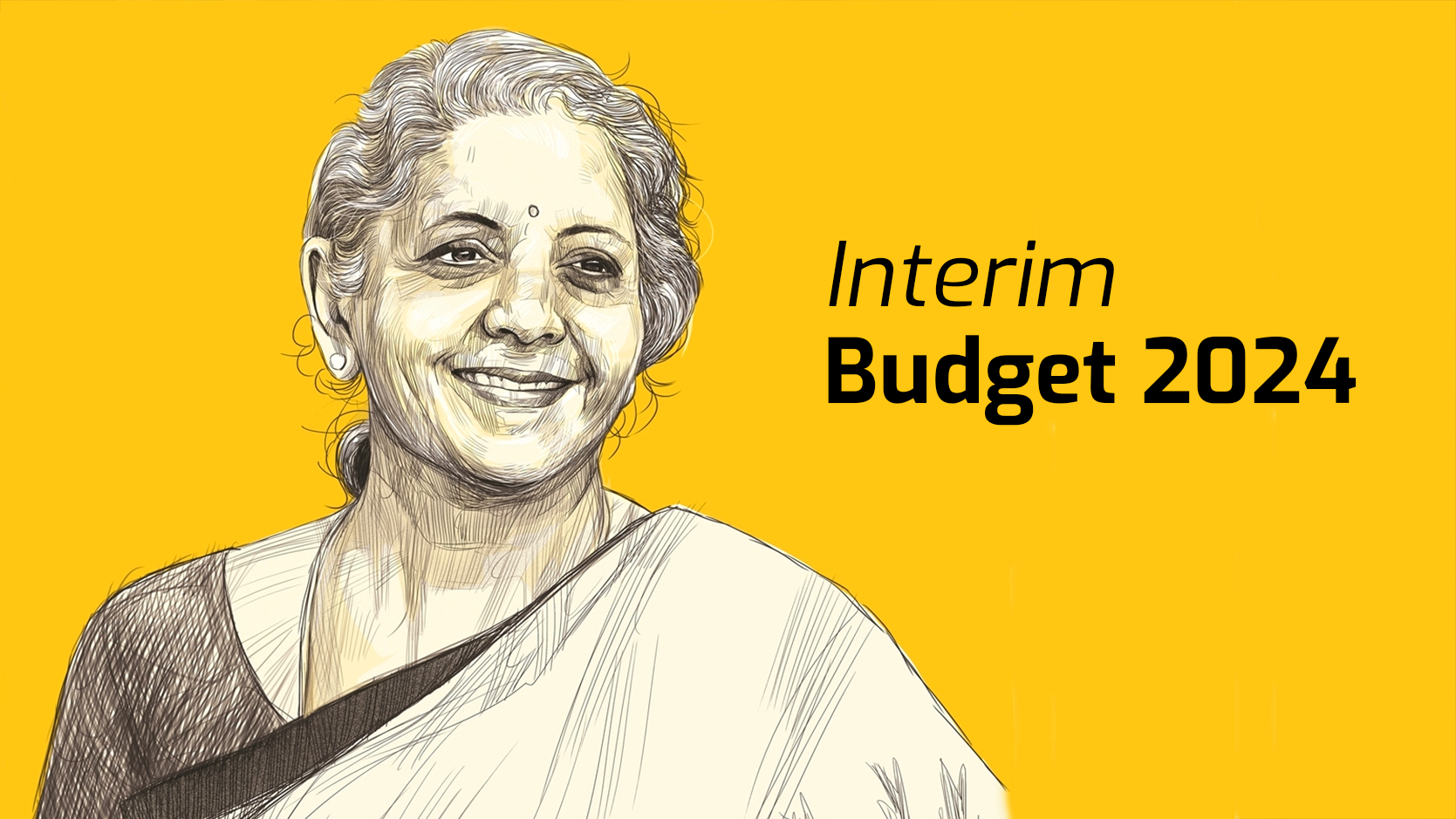Marital rape: What are the legal issues in consideration before the Supreme Court?
The Supreme Court will hear petitions on criminalizing marital rape, examining its legality, rights violations, and stakeholder arguments.
Current Scenario: The Supreme Court of India is hearing petitions seeking the criminalization of marital rape, specifically challenging Exception 2 to Section 375 of the Indian Penal Code (IPC), 1860, and Exception 2 of Section 63 of the Bharatiya Nyaya Sanhita (BNS), 2023. This case raises important questions about the legal status of marital rape, gender equality, and the constitutional rights of married women.
Outdated Doctrine : The Marital Rape Exception (MRE) is a remnant of the colonial “doctrine of coverture,” which diminished a married woman’s legal autonomy. This doctrine is outdated and reflects patriarchal assumptions about marriage and consent.
Government’s Response : The Union government opposes striking down the MRE, citing concerns about false allegations and the potential impact on the institution of marriage. The government argues that marital rape is a “social” issue that should be addressed by the legislature, not the judiciary.
Supreme Court upholds Section 6A of Citizenship Act as valid law
The Act, stemming from the Assam Accord of 1985, grants citizenship to Bangladeshi immigrants in Assam, excluding those entering after March 25, 1971.
Context: The Supreme Court of India recently delivered a landmark judgment upholding the constitutionality of Section 6A of the Citizenship Act, 1955, a provision that traces its roots to the Assam Accord of 1985. The decision, rendered by a 4:1 majority, has significant implications for immigration policy, citizenship, and regional stability in Assam.
Supreme Court’s Majority Opinion
Fraternity Principle: The judgment emphasized that the preambular value of “fraternity” applies to all residents of Assam, irrespective of origin. Fraternity mandates peaceful coexistence of people from diverse backgrounds.
Impact on Assam: The Court acknowledged that immigration from Bangladesh has placed a significant burden on Assam’s resources but argued that this issue stems from the failure of authorities to enforce timely deportation of post-1971 immigrants rather than Section 6A itself.
Statutory Mechanisms: The Court pointed out that laws like the Foreigners Act (1946) and the Passport Act (1967) are in place but have been inadequately enforced in Assam. The Constitution Bench suggested continuous monitoring to ensure the effective implementation of immigration laws.
Balancing Act: Section 6A represents a balancing act by Parliament, reconciling humanitarian concerns for Bangladeshi immigrants with the socio-economic impacts on Assam.
Historical Context: The legitimacy of the March 25, 1971, cut-off date by citing the start of Operation Searchlight by the Pakistani army, which led to a refugee crisis. Immigrants entering India before this date were considered victims of persecution, while post-1971 immigrants were regarded as refugees.
Implications for Assam
Demographic Concerns: The ruling attempts to balance Assam’s cultural and linguistic preservation with its history as a refuge for persecuted groups.
Government Responsibility: The judgment places accountability on the government for its failure to deport post-1971 immigrants, underscoring the need for better enforcement of existing immigration laws.
Economic and Cultural Strain: The judgment noted that while immigration has strained Assam’s resources, Section 6A cannot solely be blamed for the state’s socio-economic challenges.
4 issues in Supreme Court’s Assam verdict
SC upheld Section 6A of Citizenship Act, impacting Assam’s migration-related politics and raising broader citizenship issues nationwide.
Introduction:
Upheld Section 6A of the Citizenship Act (1955), which codifies the provisions of the 1985 Assam Accord. This verdict has significant implications for broader citizenship debates across India. The key legal questions revolved around Parliament’s power to legislate on citizenship and whether Section 6A violated the Constitution.
| Aspect | Details |
| Context of Assam Accord | Signed in 1985 to resolve disputes over illegal migration into Assam, setting March 24, 1971, as the cutoff date for granting citizenship to immigrants. |
| Parliament’s Powers | Majority upheld that Parliament has the constitutional authority to legislate on citizenship matters under Entry 17 of Union List and Article 11 of the Constitution. |
| Section 6A and Citizenship | Section 6A of the Citizenship Act governs the citizenship process for migrants entering Assam between January 1, 1966, and March 24, 1971, aligning with the Assam Accord. |
| Right to Equality (Article 14) | Petitioners argued Section 6A violated equality by applying only to Assam. SC upheld the law, noting the unique migratory and demographic challenges Assam faced, distinct from other states |
| Cultural Rights (Article 29) | Petitioners claimed Section 6A diluted the cultural identity of Assamese people. SC rejected this, emphasizing that demographic changes do not inherently violate cultural preservation rights. |
| External Aggression | Some argued that Section 6A facilitated “external aggression” by allowing unchecked immigration. The SC dismissed this, noting that it provided for controlled and regulated migration, addressing concerns raised in the Sonowal case. |
Legal Issues Addressed
Parliament’s Power to Amend Citizenship Laws: Verdict: The Supreme Court upheld Parliament’s authority to legislate on citizenship under Article 11 and Entry 17 of the Union List, including specific laws for regions like Assam. Significance: This ruling supports Parliament’s role in citizenship regulation, influencing debates on the Citizenship Amendment Act (CAA) 2019.
Violation of Right to Equality (Article 14): Argument: Section 6A was discriminatory, applying only to Assam with an arbitrary citizenship cut-off date. SC’s Stand: Assam’s unique migration history justified the law, and no violation of Article 14 was found. Cultural Rights (Article 29) Argument: Section 6A endangered Assamese cultural rights by permitting migrant influx. SC’s Stand: Cultural preservation could coexist with regulated migration. Facilitation of External Aggression Argument: The law allowed external aggression by enabling large-scale migration. SC’s Stand: Section 6A regulated citizenship and did not amount to external aggression.
Conclusion:
Upheld in Section 6A, reinforcing Assam Accord provisions, balancing citizenship, migration and cultural protection.
Doctors’ strike reveals how apathy to health pushes people into poverty
Why in News?
West Bengal’s healthcare spending is 1% of GDP, with 68% from patients, and less than 3% on education.
Introduction:
The recent strike by junior doctors in West Bengal highlights the severe shortcomings of the state’s healthcare system, pushing vulnerable populations further into poverty. The underlying causes of these protests reveal systemic issues that require immediate government attention.
Comparison with Other Countries
| Country | Healthcare Expenditure (% of GDP) |
| India | 2% |
| Brazil | 8-10% |
| Cuba | 14% |
Economic Impact of Healthcare Costs
The rising cost of healthcare has dire implications:
- According to a 2021 NITI Aayog report, nearly 7% of India’s population is pushed into poverty annually due to high medical expenses.
- Out-of-Pocket Expenses: For every ₹100 spent on healthcare, patients contribute ₹52 from savings, while the government contributes ₹35.
Healthcare Insurance Coverage
Only 14% of the rural population and 19% of the urban population possess health insurance. Government schemes like Ayushman Bharat and Swasthya Sathi focus mainly on inpatient care, neglecting the 80% of expenses that go towards outpatient services.
Corruption and Accountability
Corruption is rampant in the healthcare sector. A Transparency International report indicates that:
- $500 billion is lost annually to corruption in global healthcare.
- One in five people resort to bribing officials for medical care.
Conclusions:
To address the grievances raised by protesting doctors and ensure equitable healthcare access, the government must:
- Increase Healthcare Spending: Align with global standards and improve public health infrastructure.
- Combat Corruption: Establish stringent accountability measures to curb corruption in healthcare.
- Enhance Insurance Coverage: Expand access to comprehensive health insurance for all citizens, particularly vulnerable populations.
A modified UBI policy may be more feasible
Why in News?
As a core issue is financial feasibility, what may work best in India is using a modified policy as a base to which other transfer policies can be added as and when appropriate.
Context
Universal Basic Income (UBI) is gaining renewed interest globally as a potential social safety net, especially with the rise of jobless growth, driven by automation and artificial intelligence. In India, the idea of UBI re-emerged prominently after the Economic Survey of 2016-17 suggested exploring it as a possible welfare policy. This article explores the feasibility and desirability of UBI in the Indian context, considering budgetary constraints and other social welfare schemes.
UBI and the Indian Context
- UBI Concept: Universal Basic Income (UBI) provides all citizens with a fixed income regularly, irrespective of employment, aimed at reducing poverty and inequality.
- Global Trends: With automation and artificial intelligence leading to “jobless growth,” especially among youth, UBI is seen as a potential solution to growing inequality and economic instability.
- India’s Interest in UBI: Debates around UBI in India have gained attention, with scholars discussing its feasibility as a replacement or supplement to welfare programs like the Public Distribution System (PDS) and MGNREGS.
Current Situation
| Challenges | Potential of UBI |
| Growth without job creation | Safety net for unemployed individuals |
| Rising inequality and youth unemployment | Simpler universal cash transfers |
| Various welfare schemes | Address exclusion errors and bureaucratic inefficiencies |
UBI vs. Existing Welfare Schemes
Targeted Schemes: India has targeted welfare schemes like PM-KISAN for farmers and MGNREGS for rural unemployed, but they face issues such as exclusion errors and corruption.
UBI as a Social Safety Net: UBI is seen as a complement to existing schemes, not a replacement, ensuring coverage for vulnerable groups like the elderly or disabled alongside programs like MGNREGS.
Scheme Comparison
| Scheme | Target Group | Amount (₹) | Budget (% of GDP) |
| UBI (Modified) | All Citizens | 144 per month | 1% |
| PM-KISAN | Farmers | 6000 per year | 0.4% |
| Full-scale UBI | All Citizens | Large transfer | 3.5%-11% |
Feasibility of UBI in India
- Budgetary Constraints: A full-scale UBI would require 3.5%-11% of GDP, making it financially challenging without cutting other programs or raising taxes.
- Modified UBI Proposal: Economists suggest a limited UBI at 1% of GDP, providing ₹144 per month to all citizens, similar to PM-KISAN but extending to landless laborers and vulnerable groups.
Conclusion:
A modified UBI for all citizens, complementing welfare schemes, can support vulnerable groups, but requires logistical and financial planning.
Direct taxes bring 57% to total revenue, highest in 14 years
Why in News?
As a core issue is financial feasibility, what may work best in India is using a modified policy as a base to which other transfer policies can be added as and when appropriate.
Overview
The contribution of direct taxes to India’s total revenue has seen a significant rise in the fiscal year (FY) 2023-24, reaching 56.72%, the highest in 14 years. The direct tax-to-GDP ratio also increased to 6.64%, the highest in over two decades. Additionally, personal income tax collections have exceeded corporate tax collections for the second consecutive year. This article explores these trends and their implications for India’s tax structure and revenue generation.
Data of FY 2023-24
| Indicator | Value |
| Direct Tax Contribution to Total Revenue | 56.72% |
| Direct Tax to GDP Ratio | 6.64% |
| Indirect Tax Contribution to Total Revenue | 43.28% |
| Tax Buoyancy | 2.12 |
| Taxpayers (Assessment Year 2023-24) | 10.41 crore (↑ 11.1%) |
Progressivity of Direct Taxes
Direct taxes, such as personal and corporate income taxes, are considered progressive because they are tied to the income of individuals or entities. The recent rise indicates a move towards a more equitable tax system, reducing reliance on regressive indirect taxes (e.g., GST, customs duties) that disproportionately affect lower-income groups.
Corporate Tax Reforms
The 2019 corporate tax rate cut has contributed to the shift where personal income tax collections have outpaced corporate tax. This was intended to boost investment and economic activity but has implications for government revenue from corporate entities.
Tax Buoyancy
An increase in tax buoyancy signals effective tax collection mechanisms and reflects positive economic performance. This is crucial for meeting fiscal targets and funding social programs.
Widening Tax Base
With the rise in income tax filers and taxpayers, it shows better compliance and enforcement, a crucial part of government reforms to increase formalisation of the economy.
What is the new ‘click-to-cancel’ rule in US?
Why in News?
The United States’ Federal Trade Commission will soon implement a rule making it easier for consumers to cancel their subscriptions and memberships.
Overview
The U.S. Federal Trade Commission (FTC) is introducing a new rule, “click-to-cancel,” aimed at simplifying the process of subscription or membership cancellation. This rule will address customer grievances over complicated cancellation procedures and impose penalties on companies that deliberately make cancellations difficult.
Features of the New Rule
| Aspect | Details |
| Main Objective | To make subscription cancellations as easy as the sign-up process |
| Scope | Applies to almost all “negative option” programs across various media platforms |
| Cancellations | Must be offered through the same medium (online, phone, etc.) as sign-up |
| Customer Interaction | No mandatory requirement for talking to a representative unless it was necessary for sign-up |
| Cancellation Fees | Companies cannot charge additional fees for cancellations made via phone |
| In-Person Subscription | Companies cannot force in-person cancellation for memberships signed up in person; they must provide online or phone options |
Why was this rule brought in?
- The U.S. Federal Trade Commission (FTC) is modernizing its 1973 Negative Option Rule to address unfair practices in subscriptions and recurring payments, reflecting the growth of the digital economy.
- To combat deceptive practices related to subscriptions and memberships, making it easier for consumers to cancel services.
- Rising Complaints: Complaints about negative option marketing have increased significantly, from 42 daily in 2021 to nearly 70 in 2024.
- Consumer Awareness: A 2022 study found 42% of consumers forgot about services they were paying for, underestimating costs by an average of $133 per month.
- Enforcement Actions: The FTC has targeted companies like Adobe and Amazon for making cancellations difficult.
Global Comparison: Is There a Similar Rule in India?
India: Currently, there is no regulation equivalent to the FTC’s “click-to-cancel” rule. Subscription models in India are less regulated, and consumers may face challenges in canceling memberships.
Wildlife board defers nod for Vedanta’s oil exploration in gibbon habitat, clears road expansion in Rajasthan tiger reserve
Why in News?
The National Board for Wildlife deferred its nod to Cairn Oil and Gas’s proposal for oil exploration in Assam’s Hollongapar Gibbon Sanctuary until a site visit is carried out.
Context
The National Board for Wildlife (NBWL) has deferred approval for Vedanta’s oil exploration project in Assam’s Hollongapar Gibbon Sanctuary, a habitat for the endangered Hoolock Gibbon. The NBWL also approved road expansion in the Ramgarh Vishdhari Tiger Reserve in Rajasthan, with conditions to ensure wildlife safety.
Core Development
| Proposal | Details |
| Oil Exploration in Assam | Cairn Oil and Gas’s project for oil exploration in the Hollongapar Gibbon Sanctuary was deferred until a site inspection. |
| Road Expansion in Rajasthan | Approved with conditions, including building animal underpasses in the Ramgarh Vishdhari Tiger Reserve buffer zone. |
Oil Exploration in Hollongapar Gibbon Sanctuary
- Hoolock Gibbons: India’s only ape species, inhabiting the Hollongapar Gibbon Sanctuary in Assam. The sanctuary holds about 120-130 Gibbons.
- Proposal: Cairn Oil and Gas’s oil exploration is planned in an eco-sensitive zone away from the sanctuary.
- NBWL Decision: Approval deferred until a site visit by a committee consisting of representatives from the Union Ministry of Environment, Forest and Climate Change, the Wildlife Institute of India, and others.
- Conservation Measures:
- Site Inspection: The site visit will assess the project’s potential environmental impact before giving final approval.
- Previous Permissions: The Ministry’s Forest Advisory Committee had preliminarily approved the exploration in the Hoolock Gibbon habitat.
Road Expansion in Ramgarh Vishdhari Tiger Reserve
- Proposal: Widening of National Highway-12 in Rajasthan’s Bundi district, requiring 28.8 hectares of forest land from the buffer zone of Ramgarh Vishdhari Tiger Reserve.
- NBWL Decision: Approved with conditions for building animal underpasses.
- Recommended Measures:
- Animal Underpasses: For every kilometre of road passing through forest areas, a 50-metre span underpass should be constructed.
Additional Information
| Fact | Explanation |
| Hoolock Gibbons | Endangered species, arboreal, found only in Northeast India. |
| Ramgarh Vishdhari Reserve | Designated as a tiger reserve in Rajasthan; serves as a tiger habitat and connects Ranthambore and Mukundra reserves. |
Why researchers studied marine temperatures in the twilight zone
Why in News?
Recently, due to the warming of ocean waters, there is growing concern about global warming.
Introduction
Marine Heatwaves (MHWs) refer to abnormal warming of ocean waters, typically measured at the ocean surface. With the increasing frequency and intensity of MHWs due to global warming, a recent study published in Nature reveals significant findings regarding temperature changes in the “twilight zone”.
The Twilight Zone
The Twilight Zone, also known as the mesopelagic zone, is a significant layer of the ocean that plays a vital role in marine ecology and global biogeochemical cycles. It is characterized by diminishing light and temperature gradients, influencing the behavior and distribution of marine organisms.
- Biodiversity: Home to diverse organisms like lanternfish, zooplankton, and cephalopods, essential for marine food webs.
- Carbon Cycling: Functions as a carbon sink, absorbing CO2 and contributing to the biological carbon pump, which sequesters carbon.
- Climate Change Impacts: Vulnerable to rising temperatures and ocean acidification, affecting biodiversity and marine ecosystems.
- Research and Conservation: Underexplored, necessitating advanced technologies for research; requires international cooperation for sustainable management.
Significance of the Findings
- Underreporting of MHWs: The study suggests that the occurrence of MHWs in the deep ocean is significantly underreported.
- Role of Eddy Currents: The research highlights that eddy currents—large loops of swirling water—are major contributors to temperature changes in the twilight zone, rather than atmospheric conditions. These currents can transport warm or cold water across extensive distances.
- Global Warming Effects: Global warming intensifies eddy currents, resulting in faster warming rates of MHWs and increased cooling rates of cold spells.
Implications for Marine Ecosystems
- Impact on Plankton: Plankton, which form the base of the marine food chain, are adversely affected by increased temperatures, potentially leading to low oxygen levels and decreased nutrients in the water.
- Fisheries Concern: Many commercially important fish species reside in the twilight zone, and changes in temperature can disrupt their habitats and breeding grounds.
Conclusion
The study underscores the urgent need for enhanced monitoring of marine temperatures in deeper ocean layers, emphasizing the role of eddy currents in shaping marine ecosystems and the potential consequences of ongoing climate change.
India’s SDG focus and its human development issues
Why in News?
Countries that aspire to achieve sustainable development need to take steps to boost human development.
Overview
India is committed to achieving the United Nations’ 2030 Agenda for Sustainable Development. However, several human development issues remain, impacting the country’s progress in the Sustainable Development Goals (SDGs). This analysis explores India’s human development trajectory, focusing on its progress in key areas like health, education, gender equality, and income disparity.
Human Development: Progress and Challenges
India’s human development since 1990 has shown steady improvements, yet it faces significant challenges, especially in gender equality and income distribution.
Progress in Human Development
- HDI Value: India’s HDI value improved by 48.4% from 1990 to 2022, rising from 0.434 to 0.644.
- Ranking: India moved up by four ranks between 2015 and 2022, although its growth lagged behind neighbors like Bangladesh (+12 ranks) and China (+18 ranks).
- Impact of COVID-19: The pandemic impacted education and income, slowing progress in HDI dimensions.
Gender Inequality
- Gender Development Index (GDI): India has one of the highest gender gaps in human development among medium human development countries.
- Labour Force Participation (LFPR): There is a 47.8 percentage point gap between female (28.3%) and male (76.1%) labour force participation, with rural women’s participation improving faster than in urban areas.
Income Inequality
- Top 1% Income Share: Income inequality in India is one of the highest globally, with the richest 1% holding 21.7% of national income. This is higher than the world average (17.5%) and South Asia average (19.6%).
Recommendations
Tackling Income Inequality
- Redistribution Policies: Implement progressive taxation and strengthen social safety nets to reduce the income disparity.
- Inclusive Growth: Focus on promoting inclusive growth policies that support underprivileged sections of society.
Promoting Sustainable Development
- Align Human Development with SDGs: Accelerate efforts in education (SDG 4), gender equality (SDG 5), and reduced inequality (SDG 10) to meet the 2030 Agenda.





